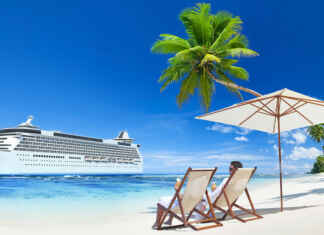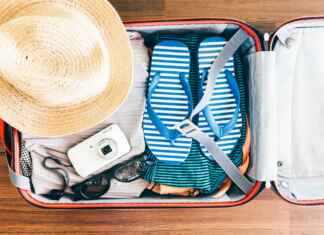Known as one of the most isolated islands in the world, Easter Island is located roughly halfway to Tahiti in the Pacific Ocean. Officially a territory of Chile, it is spread over an area of only 117 sq. km. As per legends, approximately 1200 years ago, seafarers on a double-hulled canoe arrived on this far off island. The people of Easter Island called themselves the Rapa Nui and thus blossomed the Polynesian society in this unlikely locale.
Early settlers called the island “Te Pito O Te Henua” which translates into ‘Navel of The World’. Known as one of the world’s sacred sites, the name of the island commemorates its European discoverer who landed on its shores on an Easter Sunday in 1722. The Rapa Nui developed a distinct architectural and artistic culture which is said to have reached its zenith between the tenth to sixteenth centuries.
The Easter Island is most famous for its enigmatic giant stone statues known, as “moai”. Historians consider them to be the most incredible ancient relics ever discovered. The giant statues, carved out of volcanic rock into head-and-torso figures are, on an average, 13 feet tall. Most scholars speculate that the moai were created to honor ancestors and other important personages. However, no written or oral records exist to comprehend why exactly the Rapa Nui people undertook the task of the construction of the Moais. Yet, undoubtedly, the Moais reflect the history of the dramatic rise and fall of the Polynesian culture. There are approximately 900 moai spread all across the island.
It is said that Easter Island’s demise resulted from an environmental catastrophe. Apparently, the Rapa Nui people cut millions of trees to clear fields or make fires. The loss of trees exposed the island’s soils to serious erosion. Thus, when the Europeans arrived in 1722, they found the island mostly barren.
Some of the must visit destinations in Easter Island include:
• Rano Raraku: Remnant of a 300 foot volcano, Rano Raraku is an inland quarry on a hillside. It is at this site where the majority of moais were created. As partially-finished maois are scattered around, various stages of carving can be explored by the visitor. Travel enthusiasts recommend climbing to the left side of the crater for a brilliant and breathtaking view.
• Rano Kau: A similar volcanic cinder cone, Rano Kau is filled with fresh rainwater and has a breathtaking appearance.
• Anakena Beach: Situated on the north side of the Easter Island, it is among the most well visited spots on this island.
As far as the best time to visit Easter Island is concerned, the weather is really rather pleasant year-round. The Southern Hemisphere summer, which is usually from the month of January to March witnesses relatively high temperatures. Winter can get a bit chilly as the minimums, particularly in the evenings can dip to around 14ºC. The average maximums hover around 22ºC.
As far as accessing Easter Island is concerned, many interested tourists drop the idea of visiting this place due to its extreme geographic isolation, in the middle of Pacific Ocean. However, Easter Island is accessible from Santiago de Chile and Tahiti. There are regular flights via LAN Airlines daily to Santiago de Chile and once per week to Tahiti, from where Easter Island can be accessed.
For a peaceful yet interesting holiday, plan a vacation to Easter Islands !








